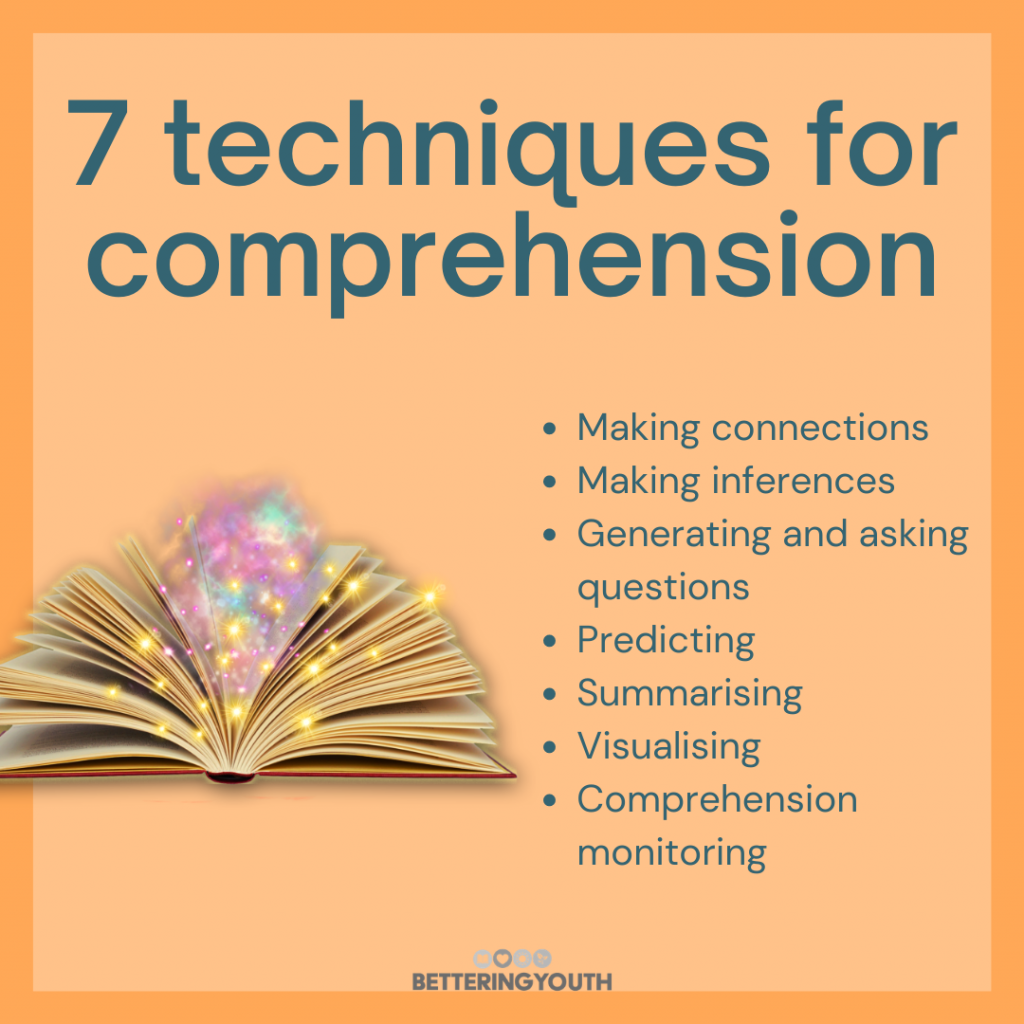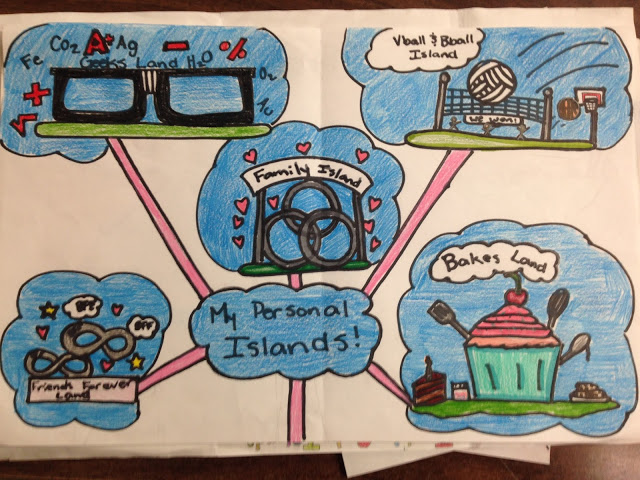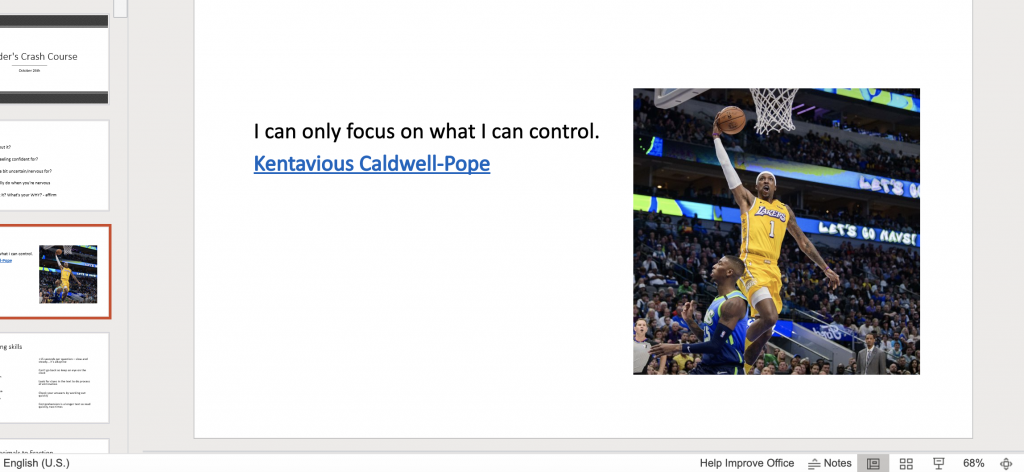Supporting children in developing strong comprehension skills through making connections is imperative to their success.
As such, we have created a mini-series: Comprehension: How To Support Readers. This mini series will endeavour to provide theoretical understanding of the 7 skills required to become proficient readers, along with practical methods to teach each skill.
Today is day one of the Comprehension: How to Support Readers mini series!
Note: If your child is currently struggling or reluctant about reading, please be sure to visit this blog first as it shares 6 powerful steps to support struggling and reluctant readers.
Comprehension is a strong predictor of overall academic achievement (Luke, Dooley and Woods, 2011). This is likely why most exams assess a student’s ability through comprehension. To be successful in their understanding of text, students need to be taught the following comprehension skills:
- Retrieving
- Interpreting
- Integrating
- Reflecting and
- Evaluating information
7 Strategies to Teach Strong Comprehension Skills
Suffice to say I am a bookworm. As such, I am dedicated to teaching the techniques which unlock the world of literature. Teaching comprehension is important for all readers; struggling, reluctant and avid. To ensure children can become proficient readers, comprehension is a skill that needs to be taught repeatedly. This will help them grow in confidence.

The 7 Strategies of Comprehension:
- Making connections
- Making inferences
- Generating and asking questions
- Predicting
- Summarising
- Visualising
- Comprehension monitoring

Let us review technique number 1 in this post:
1. Making Connections While Reading
Prior knowledge will be unique to each reader. This is the wonderful part of interacting with a text. It helps you to create the moving image in your mind as you pull on your past experience to interpret the words and intrinsic meanings.
Prior knowledge can come in 3 different forms:
- Personal knowledge: the experiences for which they have personally encountered and the memories they hold.
- Cultural knowledge: the understanding of religion, heritage, race and tradition will depend on their exposure.
- Conceptual knowledge: their personal schooling experience, along with their personal hobbies and interests can lend in developing their conceptual knowledge.
A reader will make connections to the text at various points:
Before reading:
- What ideas do I already know about this text?
- Is there known vocabulary that can support my understanding?
- What type of text features do I recognise and can expect to see?
During reading:
- Are there similarities between this text and another that I have read?
- Where have I seen these text features before?
- This part is similar to the time when I …
After reading:
- From this text I have learnt…
- Based on this text I have the opinion that…
Teaching Readers to Make Connections while Reading:
A popular method used by teachers to ignite the process of making connections is using a KWL chart.
A KWL chart, also known as the Know – Want – Learn chart, helps readers identify what they already know about the topic, what they wish to discover from the text, and finally what they have learnt from the text.

One of my favourite books to use to demonstrate Making Connections while reading is Henry’s Freedom Box by Ellen Levine.

How to use Henry’s Freedom Box as a read aloud to model Making Connections:
- Begin with a discussion about the book cover and title.
- Do a picture walk through to see what pictures might bring about memories or prior knowledge.
- Model the thought process and use thinking stems:
- I am reminded of _____ because
- This ______ makes me think of ______
- I like this word choice and want to include it in my own writing so I’ll add it to my vocabulary book
- Encourage students to fill in their K-W-L chart.
Of course, one of the easiest ways to fit it into a busy schedule is simply by asking open ended questions throughout the day AND modelling this by sharing your own response after they share theirs.
Example:
“Look! Riley has a ‘Hockey Island’ in her personality spheres. Would you put hockey as one of your personality islands?” After the question is answered (this is a closed question so be sure to follow it up with an open ended one): “I agree! What other personality island do you think you’d include for yourself now?”

A fun extension activity for Personality Islands can be seen here: Inside Out Activity Day.
Or simply sharing powerful quotes from a child’s idol and connecting it to their own life:
“X, when you’re sitting in your ISEB exam and beginning to feel a bit overwhelmed or frustrated, what can you think of to help you regain control of your wandering and worriesome mind?”
“I can think of the quote by Kentavious that we found that talks about doing the best we can by focusing on what we can control. Then with a few breaths I’ll feel better.”

Have fun supporting readers in making connections while reading
There are no ninja tricks that will allow your child to become an expert reader over night.
If you/they want to break through and grow in confidence with reading then focus on building these technical skills.
Patience is key when developing confidence in any area so be sure to reflect on this throughout the week and be sure to let me know what strategy you have chosen to employ in the comments below.
Cheers and all the best to all the readers!
Be sure to check out Week 2 of Comprehension: How to Support Readers where we will be covering Making Inferences.
If you’re keen to work with an English Tutor
Check out English tutors near you who are ready and excited to support your child!
